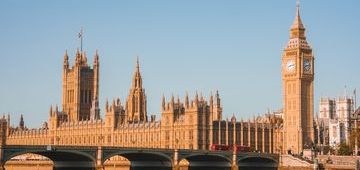
In our guest blog, researchers from the School of Public Health at Imperial College London, Jonny Pearson-Stuttard, RSPH Trustee and Professor Majid Ezzati, present their work on excess deaths in England and Wales, and demystify the differences between direct, indirect and wider economic effects of our COVID-19 response.
The Covid-19 pandemic has, in just a few months, brought the global economy to a halt and changed society and our daily lives in ways that were previously unimaginable to many. The virus has already killed hundreds of thousands of people around the world and the UK has one of the largest death tolls to date. This tragic number has been tracked daily at Government press briefings, standing at over 38,000 as of May 29th. The total mortality impacts of the pandemic, however, are likely to be greater than this already and to increase further in coming weeks.

The mortality impacts of Covid-19 can be broadly grouped into three:
1. Direct effects of the virus – individuals contracting the virus and dying from the disease.
2. Indirect impacts of our response to tackle the virus. The unintended consequences of the health system understandably pivoting to focus on Covid-19 is likely to impact other conditions - cancer referral rates were down 75%, A&E attendances halved and more than 2 million elective operations cancelled across the country.
3. Wider economic effects. The social and economic conditions resulting from the pandemic are likely to have substantial impacts which will be felt unequally across communities and the nation. A similar rise in unemployment to that seen after the 2008 recession would be expected to lead to 900,000 more working age people with chronic medical conditions.
Excess deaths from all-causes are therefore seen as the most comprehensive measure to assess the full extent of the pandemic and to inform ongoing strategy. The Office for National Statistics and the Financial Times have been reporting excess deaths each week whereby they use the average death rates from the corresponding week of each of the last five-years. To provide essential details by age group and sex, and to have a method that will allow comparison with other countries, our research group at the School of Public Health, Imperial College London, leveraged previous approaches to estimating the inequality in life expectancies in England, forecasting life expectancy and estimating monthly mortality in the US to estimate excess deaths in more detail (age and sex combinations) and including important factors such as temperature and seasonality. The study has been published as a ‘pre-print’ while peer-review is ongoing.
From the middle of February until 8th May 2020 we found 49,200 more (excess) deaths than would have been expected in the absence of the pandemic in England and Wales. This equates to 43% more deaths than expected. At that time (8th May) the Government’s daily tracker had registered just over 31,000 deaths; our findings, consistent with ONS and the FT’s estimates, suggest the mortality impact to be 60% higher than this.
We found around one in four (12,000) excess deaths not attributed directly to Covid-19 (Covid-19 not mentioned on the death certificate). The weekly portion of non-Covid-19 excess deaths reduced substantially over the period, however. This is interesting and could suggest that a large portion of these deaths earlier in the pandemic were indeed Covid-19, or that the indirect mortality impacts through health services pivoting to focus on Covid-19 reduced, or a combination of these factors.
It has been widely reported from countries around the world and in the UK that men have higher death rates than women; our findings confirm this with higher death rates in men than women across all ages except the oldest (85 years and older) group where more than 12,000 deaths occurred in women over 85 compared to under 10,000 in men of the same age.
Tracking the total mortality impact of the pandemic is vital and provides important insights. Further, more detailed, analyses are needed however as we move into the next phase of the pandemic.
Countries from around the world have taken different approaches to tackling the virus. The approach that our group uses, including important adjustments for factors such as temperature, season and where bank holidays land, allows for a standardised way of comparing excess deaths across countries; this will be important in learning lessons from the first phase of this pandemic to guide subsequent waves, if and when they come.
We know that the mortality impacts of Covid-19 have not been felt equally across the country. Deaths rates are twice as high in those in the most deprived communities compared to the most affluent, while death rates vary considerably across ethnicities and regions.Similarly, the indirect mortality effects of Covid-19 are likely to have been, and continue to be, unequal. Understanding the cause-specific death patterns by geography, age and sex groups will inform planning for health resources as the NHS gets back towards ‘normal’ operating and planning for subsequent waves of the pandemic.
The mortality impact of Covid-19 was around 60% higher than the reported Government figures in early May. Tracking the total mortality impacts with enough detail to identify the inequalities across people, regions and causes of death will be vital to inform policy and minimise the longer term impacts of the pandemic.



